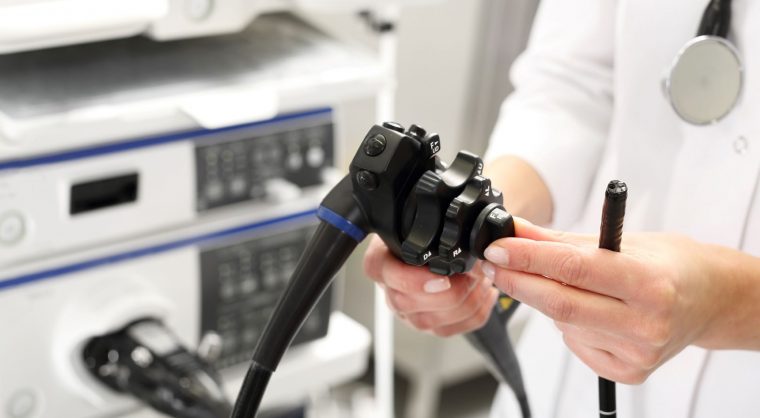Drs. Latha Alaparthi, Katherine Garman, Sri Komanduri and Mehnaz Shafi hosted a panel discussion on ergonomics and the prevalence of musculoskeletal injuries in gastroenterology.
Here are some tips from the AGA Community Roundtable experts and members:
-
Take a mental “time out” before each case
Also take microbreaks to shake out your hands and roll your shoulders during long cases.
-
Send periodic reminders to MDs and staff
These could be for things like initial room set up, taking breaks and maintaining neutral positions during long procedures.
-
Focus on room set-up
Use a standing mat.
Ensure lighting in the room is right for you on the first case. -
Prep for success
Before getting started, make sure everything is adjusted for your height and comfort.
Make adjustments to your procedure template that orders procedures in a way that minimizes strain. -
Make adjustments as needed during the procedure
“I aim to maintain a neutral position and use minimal force, often relying on water during insertion.” -Dr. Katherine Garman
Be cautious if trying to help move a patient. -
Exercise is essential
“I had my first shoulder operation at 42, and I realized soon after that regular exercise is crucial to being able to continue performing endoscopy into your 50s and beyond. We have a very physical job and need to stay fit to have a long career.” -Dr. T.R. Levin
Also consider exercise such as running, yoga and strength training to boost and maintain your overall sense of wellness. -
Train your fellows
“We are laser focused on polyp detection and endoscopy technique, but as part of this we need to comment on the ergonomic piece such as table height, neck position, having the scope over torqued, and maintaining the scope in a comfortable position (which is usually the most effective as well).” -Dr. Sri Komanduri
Techniques to minimize endoscopy related injury
-
For your hands:
“A simple technique that I have been using for years and has, I believed, saved my left thumb joint, is to lock the left-right / small knob when I scope. This keeps the wheel in place and when I need to turn it, I do it with my right hand, not my left thumb. This prevents the faraway reaching for my left thumb joint.” -Dr. Deborah Proctor
“I make an effort to ensure my left hand with the shaft of the scope rarely crosses over the body of the scope during colonoscopy. It allows for the most ergonomic and relaxed position, and facilitates a short scope to the cecum.” -Dr. Sri Komanduri
“When I noticed my hands were aching at the end of the day, I added squeezing foam balls to my morning routine. I squeeze the balls multiple times with both hands and then just between my thumb and fingers. This helped my hand pain, but not my thumb pain. I then added thumb exercises (squeezing one of the foam balls between my R and L thumbs using the tops and bottoms of the thumbs and then the sides).” -Dr. Eric Pollack -
For your neck:
“I do hand and neck stretching exercises for 1-2 minutes between cases. I try to minimize left and right colon insertion force by straightening the scope, repositioning the patient, etc.” -Dr. Mehnaz Shafi
-
For your upper body and back:
“Consciously maintain neutral stance-except when using foot pedals, for long procedures-during withdrawal-rest left hand with scope on patient hip, stretch hands/fingers between procedures.” -Dr. Latha Alaparthi
View more in the AGA Community Roundtable thread, which also includes a wrap-up of the 2021 Tech Summit session on ergonomics and ways that women endoscopists are at increased risk for injury.
Continue the conversation: Share your ergonomics tips and experiences with the AGA Community.























